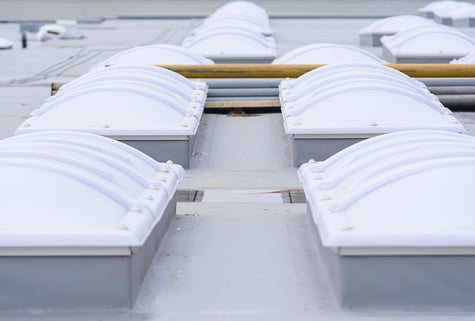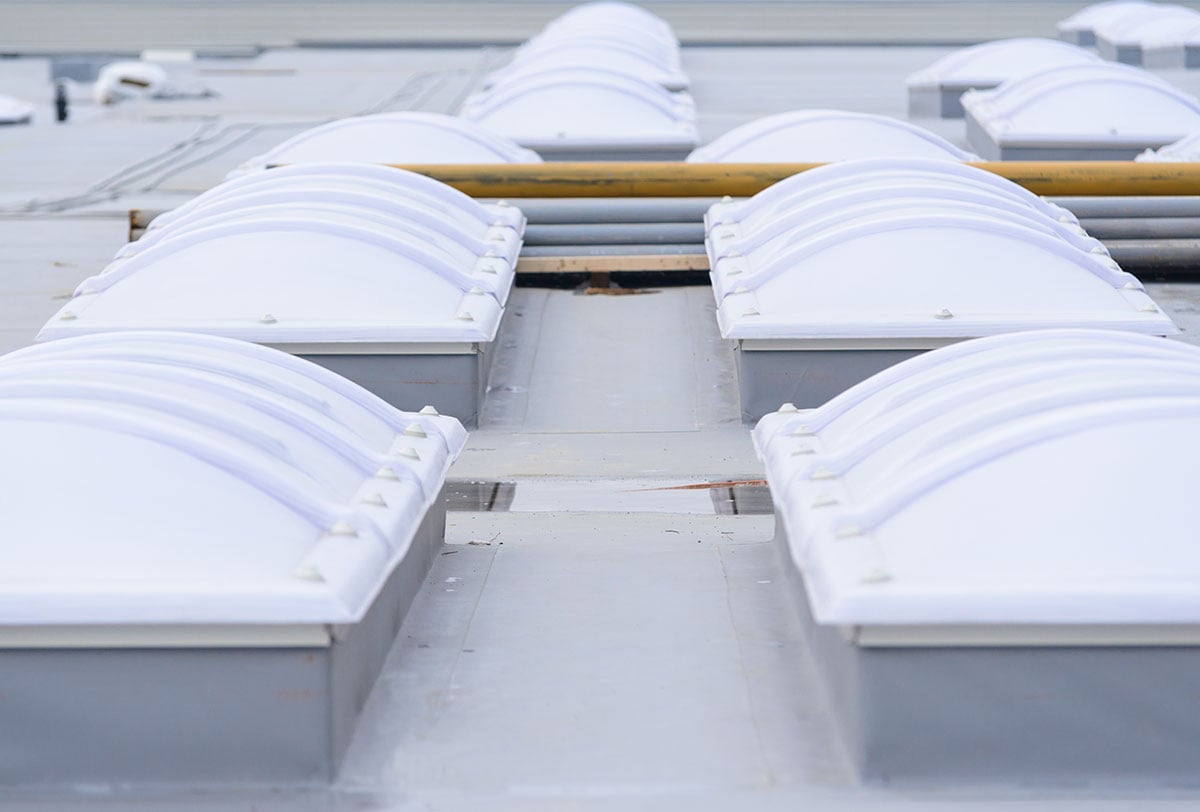 Skylights are popular for a reason. They add an extra dash of beauty to any commercial building, and they’re a great source of free lighting. But there are also drawbacks, and, if you’re not aware of them, the costs can end up being far greater than the benefits. Whether you already have a skylight or are considering adding one to the design of a new roof, make sure you’re prepared to deal with the downsides:
Skylights are popular for a reason. They add an extra dash of beauty to any commercial building, and they’re a great source of free lighting. But there are also drawbacks, and, if you’re not aware of them, the costs can end up being far greater than the benefits. Whether you already have a skylight or are considering adding one to the design of a new roof, make sure you’re prepared to deal with the downsides:
1. Leaks
Skylights are famous – or maybe that should be infamous – for leaking. Over time, the seals and flashing can deteriorate, providing an opportunity for water to penetrate your roof. Things like rain, snow, and debris can accelerate the process. Modern skylights are less prone to leaks than older versions, but even the best skylight can leak if it isn’t installed properly.
There’s an additional leak risk, too: ice dams. Skylights transfer heat to the surrounding roofing material, causing any accumulated snow to melt. That, in turn, can contribute to ice dams, eventually causing, even more, leaks and adding to the cost of roof maintenance.
2. Breakage
Even standard roofs are vulnerable to the elements, particularly wind and storm damage, but skylights are even more so. Hail and flying debris, for instance, can easily crack a skylight. And, when it comes to snow loads, skylights can be the weakest part of the roof. If you calculate the maximum weight load based on the rest of the roof, your skylight could fail from the excess weight of a heavy snowfall.
3. Falls
For workers performing roof maintenance, skylights pose a risk for serious injury, or even death. Some workers simply assume that skylights are designed to bear their weight and will intentionally stand or sit on them. Tripping and falling onto a skylight presents yet another risk. That’s why OSHA puts skylights in the same category as other open holes and requires that each one is protected by a screen or guard rail that meets the agency’s regulations.
However, guard rails aren’t 100% safe either. Depending on the quality of the safety net or the weight of the victim, roof maintenance professionals can fall through just as easily as they would through a skylight.
4. Light Exposure
While access to free natural lighting is one of the primary benefits of skylights, there’s also a drawback. Depending on the placement, skylights can actually let in too much light, contributing to glare and excess UV exposure. Not only can that be hard on employees, it can cause preventable damage to furniture, carpeting, art, and more valuable items.
5. Energy Loss
In stark contrast to the lure of free lighting, skylights can have a significant negative impact on heating and cooling costs. Skylights simply don’t present the same barrier to heat transfer that more traditional roofing materials do. In the winter, heat escapes. In the summer, heat seeps into the building – and sunlight and glare only add to that effect. According to the National Fenestration Rating Council (NFRC), skylights can cause a building’s interior temperature to fluctuate by over half of the difference between the exterior temperature.
6. Space Constraints
Skylights take up rooftop space that could be used for equipment or other purposes. To get the maximum benefit of free natural lighting, you need to dedicate 7-10% of your roof to skylights. That’s space that can’t be used for things like rooftop equipment and supports. It also claims space that might be needed for workers to perform roof maintenance. And if you have a small roof, that is going to be a problem!
There’s no doubt that skylights contribute to a building’s aesthetic appeal, and they can also reduce the cost of electrical lighting. But they have drawbacks, too, and building managers have to consider both aspects to make an informed decision. When considering skylights as part of your building’s future, remember to think about the hidden costs like increased roof maintenance, heating and cooling, and safety precautions.





